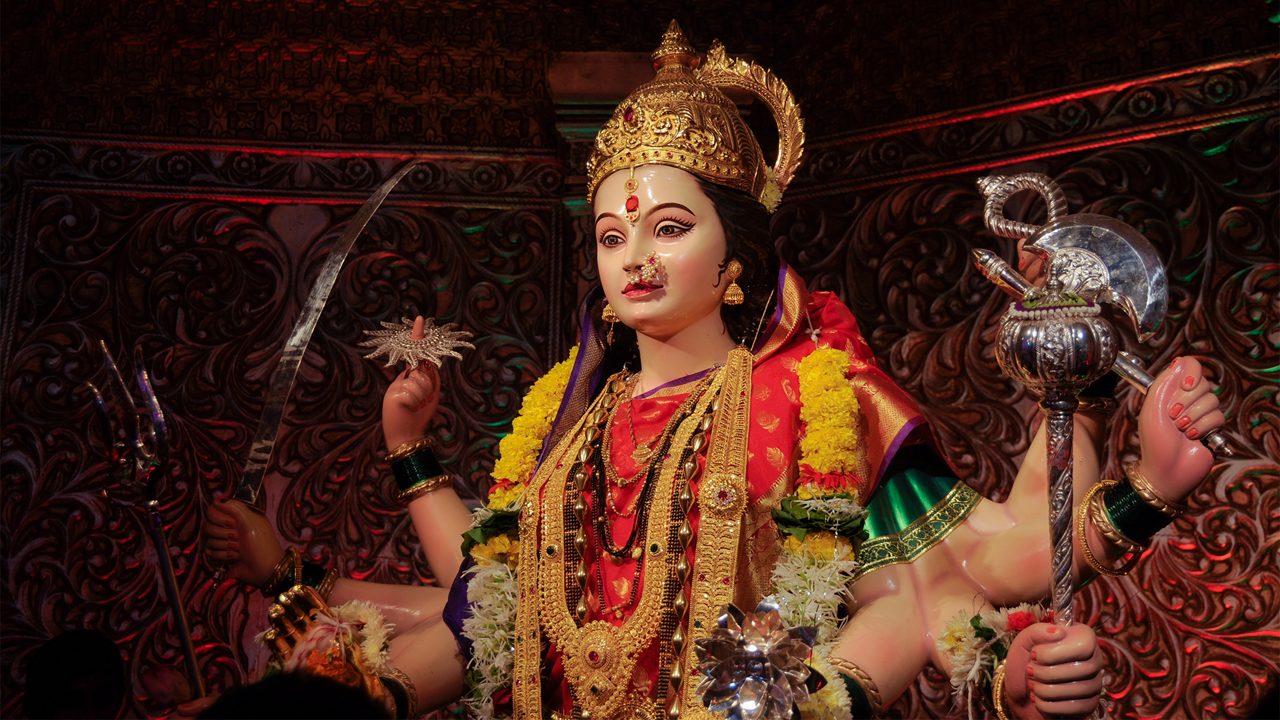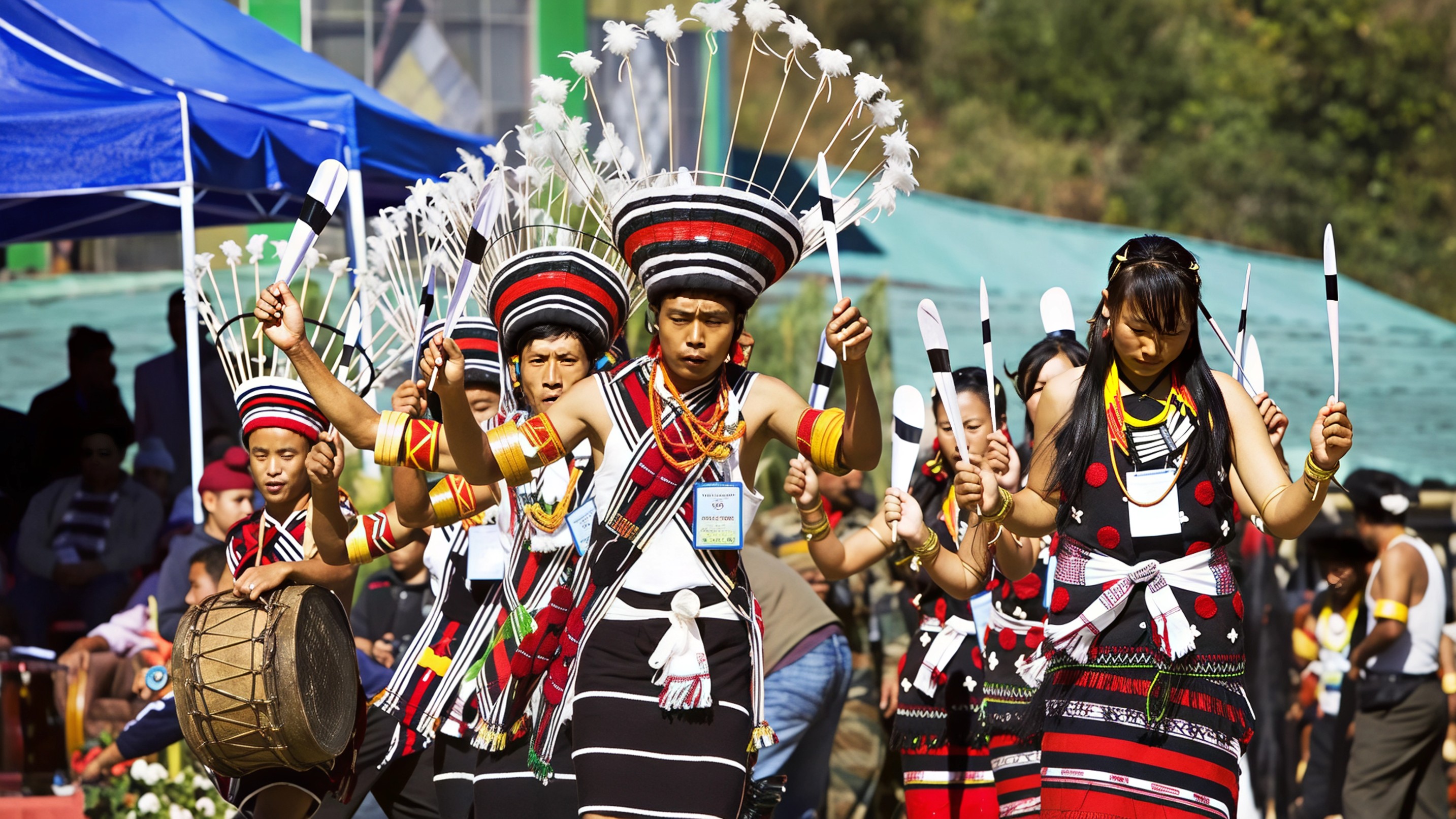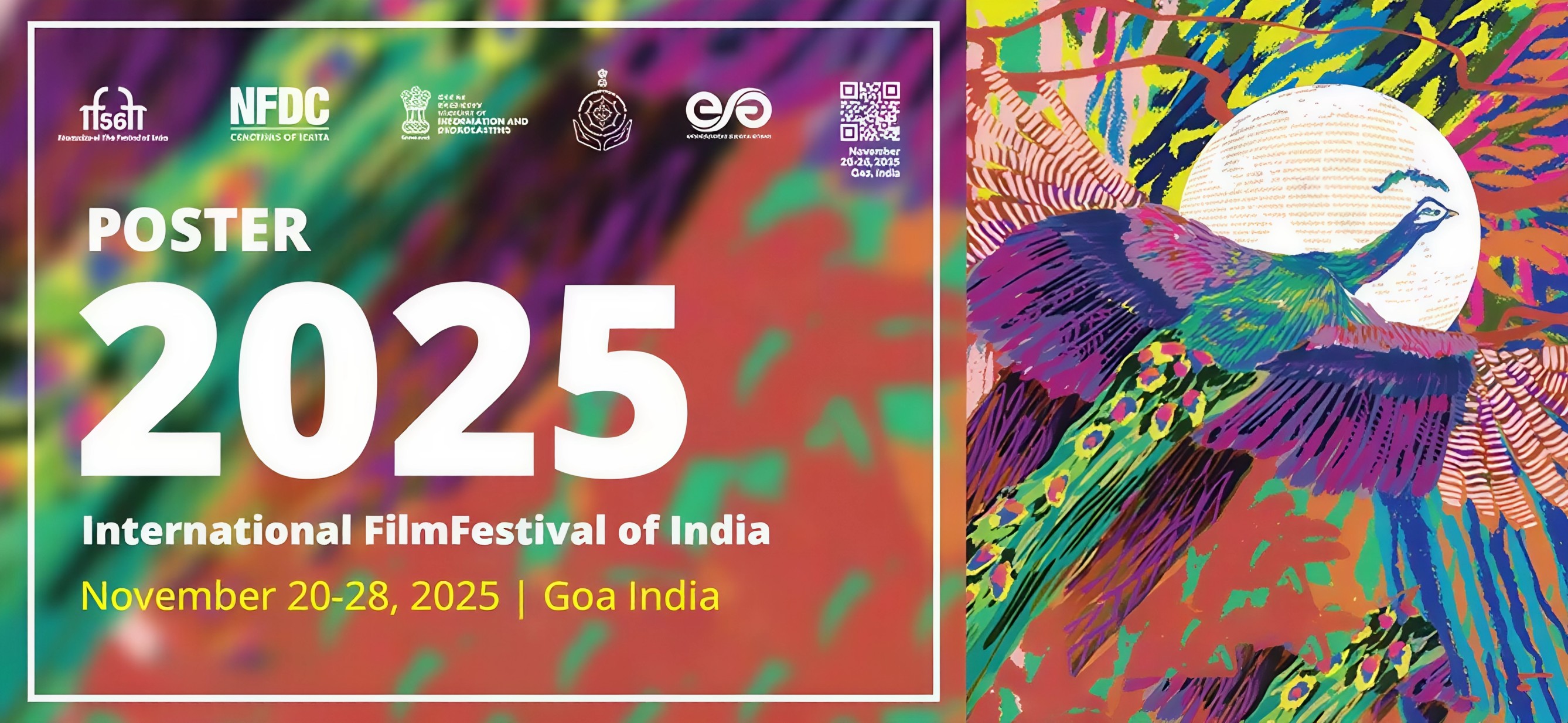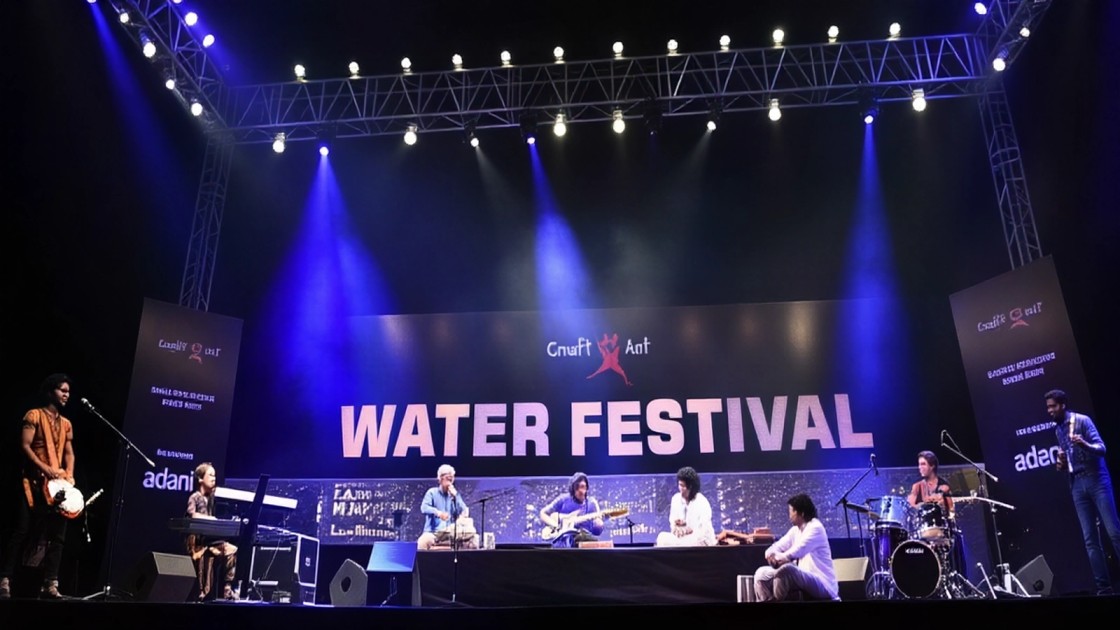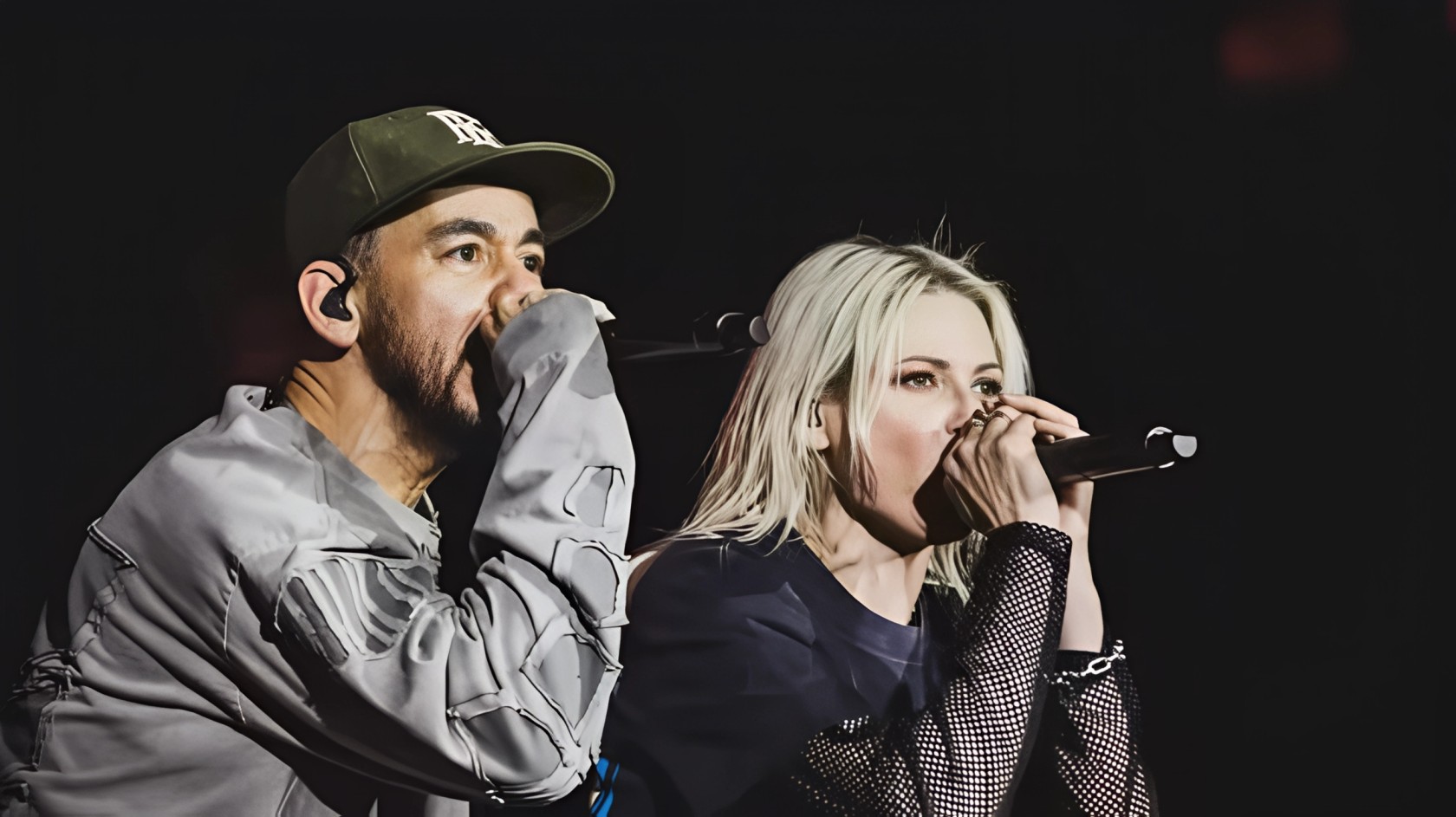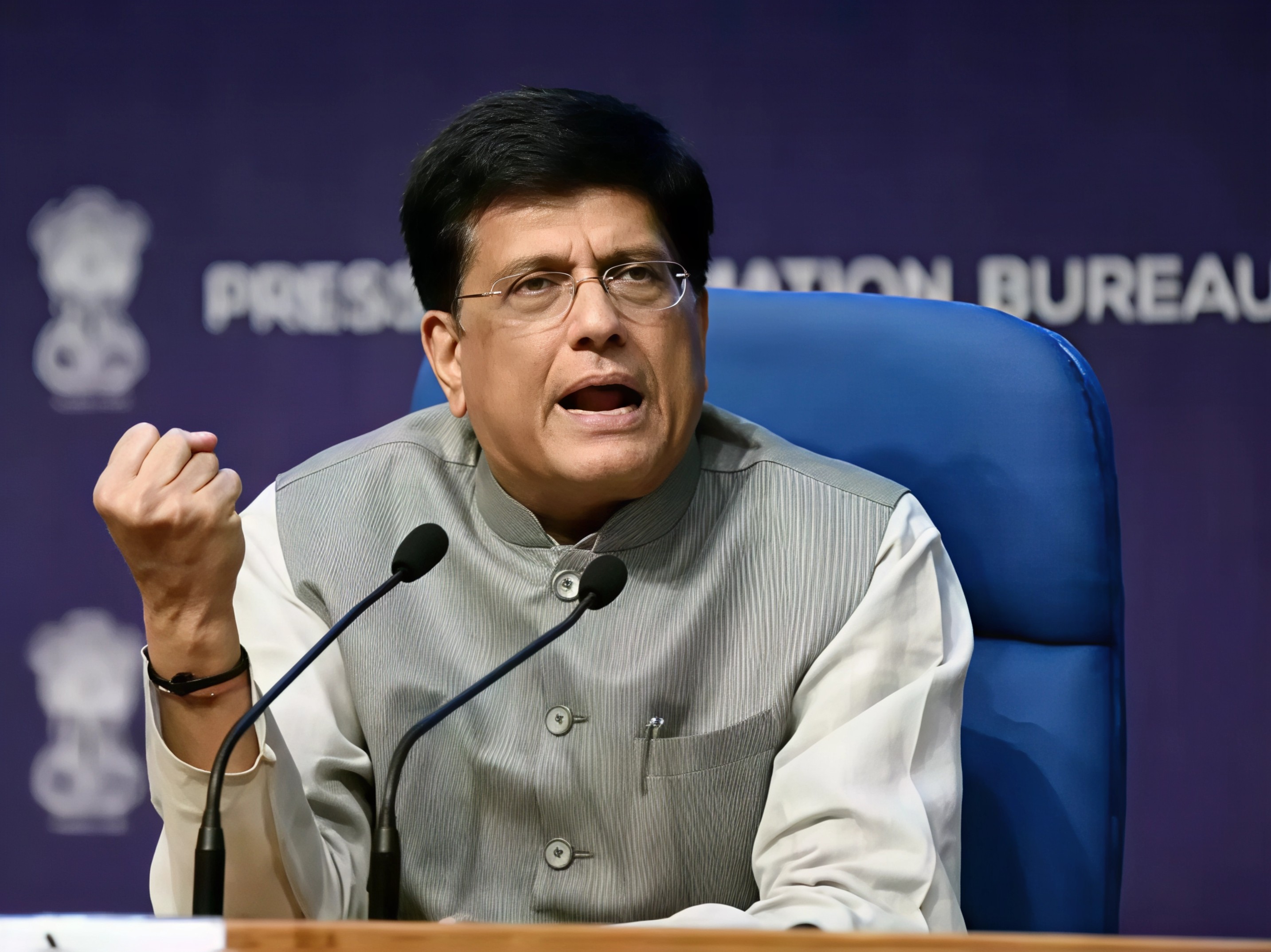The Spirit of Navratri in Gujarat
Navratri is one of India’s most spirited festivals, and in Gujarat it becomes a state-wide celebration that lasts through the night. Families begin by preparing a sacred garbo pot with coconut, betel nut, and coins to invoke Goddess Durga. Each evening, rituals honour the nine forms of Maa Durga, starting with devotion and puja before transforming into dazzling Garba and Dandiya Raas performances. The atmosphere brings together communities across cities and villages, with women and men joining freely, symbolising empowerment, unity, and joy.

Worshipping the Goddess
Navratri in Gujarat is deeply rooted in the worship of Maa Durga’s nine divine forms—Shailaputri, Brahmacharini, Chandraghanta, Kushmanda, Skandamata, Katyayini, Kalaratri, Mahagauri, and Siddhidatri. Sacred temples such as Ambaji, Pavagadh, Bahucharaji, Khodiyar Mata near Bhavnagar, and Chamunda Mata at Chotila attract thousands of devotees during this period. Pilgrims offer prayers, fast, and perform rituals before joining the celebratory dances. The combination of spirituality and festivity makes Navratri unique in its energy.
Colours of Tradition: Garba Attire
Costumes are central to Navratri’s visual appeal. Women adorn themselves in chaniya cholis decorated with intricate mirror work, embroidery, and vibrant bandhani prints, while men wear kediyus, turbans, and mojris. Jewelry, bangles, and ankle bells add sparkle as dancers move in circles, turning festival grounds into glowing mandalas of colour. Each outfit tells a story of heritage and creativity, making Navratri as much about fashion as it is about faith.
Dance and Music at the Heart of Navratri
Garba and Dandiya are at the core of the celebrations. Communities form circles around lamps or goddess idols, clapping and stepping to traditional rhythms. The dance starts slow and devotional but grows faster as the night deepens, turning into an electrifying mix of beats and movement. Dandiya Raas adds playful energy as dancers strike sticks in rhythm. Today, many performances blend folk music with contemporary beats, drawing young crowds while preserving the essence of tradition.
Safe and Joyful Nights
Navratri in Gujarat is known not only for its cultural vibrancy but also for its safe and inclusive atmosphere. Women dance freely through the night while security teams and helplines ensure safety. Medical vans, first-aid posts, and emergency exits are arranged at major venues, making the festival both joyous and secure for everyone.

Places and Experiences You Should Not Miss
Every city and village in Gujarat has its own Garba celebrations, but some stand out. Ahmedabad’s GMDC Ground and Sabarmati Riverfront, Vadodara’s United Way Garba at Navlakhi Ground, and historic sites like Bhadra Fort host massive events with thousands of participants. Smaller neighbourhood Garbas offer authentic experiences where visitors can easily join locals in the circle. Pilgrimage visits to Ambaji and Pavagadh during the day, craft bazaars, and food fairs add richness to the celebrations.
Flavours of Navratri

Food is an essential part of Navratri. While many observe fasts, farali delights like sabudana khichdi, farali pattice, and batata vada are popular. No Navratri is complete without fafda and jalebi, a crispy-sweet combination especially enjoyed during Dussehra. Markets in Ahmedabad and Vadodara stay alive till dawn with snacks, dhokla, khandvi, patra, and more, making the festival a feast for both the soul and the taste buds.
A Celebration of Spirit and Togetherness
Navratri in Gujarat is more than just a festival—it is an expression of faith, joy, and unity. Whether you join a grand Garba event or a small village circle, you will find yourself swept into the rhythm of devotion and dance. For travellers, it is an unforgettable immersion into Gujarat’s culture, hospitality, and festive energy.
Follow Travel Moves on Instagram and Facebook for more cultural travel guides and updates.

